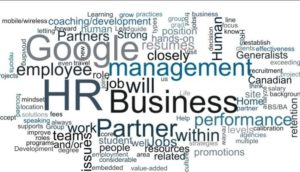
“Historically, many within the HR profession have lamented the lack of respect and acknowledgment for the services they provide. Many organizations still treat their HR as transactional, tactical departments that don’t add much value. Now opportunity is banging at the door of every HR function to reverse that situation. The need to be more strategic and business-linked is evident.”
To help get started on the path to alignment within your organization, there are three key ways that HR can assist as a strategic partner.
- Create a Strong Culture
- Put a strategy on paper
- Get everybody onboard
- Drive it Home
- Focus on Employee Development
- Leadership Development – boosts engagement, improves performance and retains your most important employees
- 6 times greater engagement and retention of upper management and key leaders
- 12 times better business growth
- 20 times greater overall retention
- Make Schedules More Efficient
- Using HR analytics to better predict exactly when their employees are best utilized results in a total savings of up to 12%. Plus scheduling improvements lead to improved customer experience.
- A schedule that uses analytics is able to better predict workforce gaps, talent needs, and opportunities to prevent overtime – therefore improving the bottom line.
How can HR be viewed as more strategic within an organization?
- Develop a greater business acumen, or learn to talk the talk. You need to be able to tie recommendations, people programs and recognition (including compensation) to the goals of the business. You need to talk in the language of other company leaders
- HR professionals have much to contribute about issues such as increasing employee productivity, contribution and engagement – but they must explain why it matters to the business and how it can be achieved.
- HR needs to put time and energy towards bringing great people into the organization, keeping them there and developing their potential.
- Take on the role of advisor. Get your business partners thinking about how their business decisions will impact the actual people in their roles. Tie numbers to the big picture. Help your business understand the “why” behind the metrics. How do the people metrics tie to the business metrics?
- Align the HR goals with the business goals. Your tool box should match what you want to build!
- Great organizations need great HR leaders in tune with technology and how that technology can reduce transactions and build value. Not just add value but CREATE value.
- Proactively seek out opportunities/innovate and continue to step outside of traditional roles
How do I accomplish this?
- Some ways you can understand the business and talk the language
- How is success measured?
- How does it make money?
- How does the business units work together and/or rely on each other?
- What are the challenges?
- How does the external market impact internal decisions and strategy?
- What are the critical positions?
- How do they impact the bottom line?
- Next, focus on building relationships throughout the business
- What’s important to leaders?
- What going well for managers/leaders and associates?
- What are their challenges?
- How do they make decisions and why?
- Hire the right people
- Empower new employees to become productive through effective onboarding and training
- Lead the efforts with mindset shifts
- From past-focused to future-focused – if an organization clings to the rule such as an employee needs to be in a role for 2 years before they get promoted, if they are a top talent, you will very likely lose them.
- Act in partnerships and equal ways rather than focusing on telling people what they can and cannot do.
- Transition from focus on and measurement of activities to results-based accountability.
In summary, to enable your Human Resources Team to play a strategic role within your organization, focus on these core initiatives and skills:
- Understand the Business
- Tactical Human Resources – right people in the right job, performing at the right level, with the right skills at the right time with a focus on retaining and engaging talent. How do you use technology to reduce costs/save money/streamline processes
- Foundational Organization Development – create an environment to allow employees to operate at their fullest potential
- Partnership – understand what it means to become a partner and actually have the ability to be a partner is equally important. This means understanding personalities, styles, etc. Know how to listen, develop relationships and identify areas where they can add significant value.
You manage the most valuable resource of the company – their human capital
Want to learn more about these trends? Mark your calendar for Talent Summit 2018 on September 12th, 2018. More details available here soon: 2018 GSDC Talent Summit